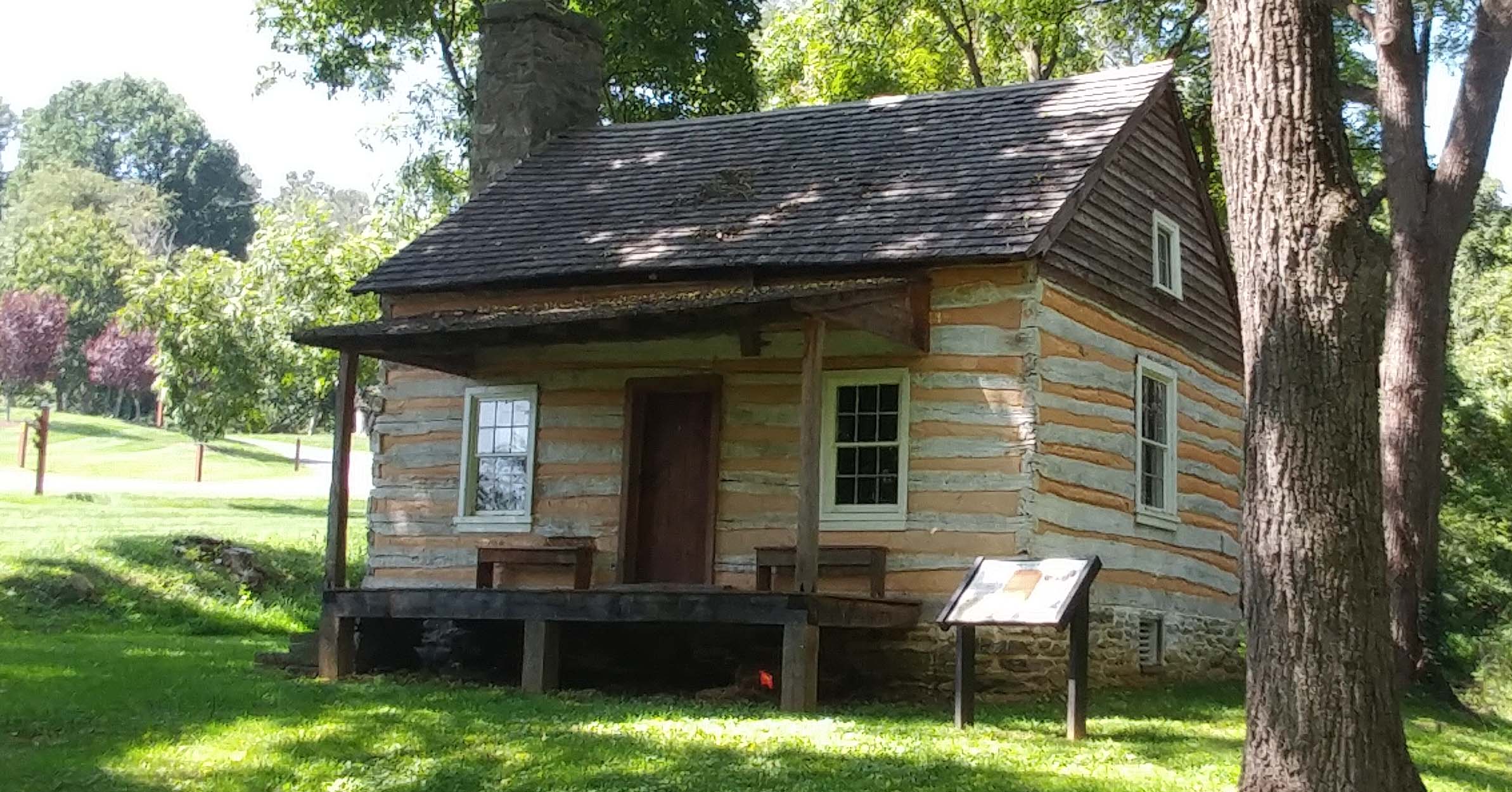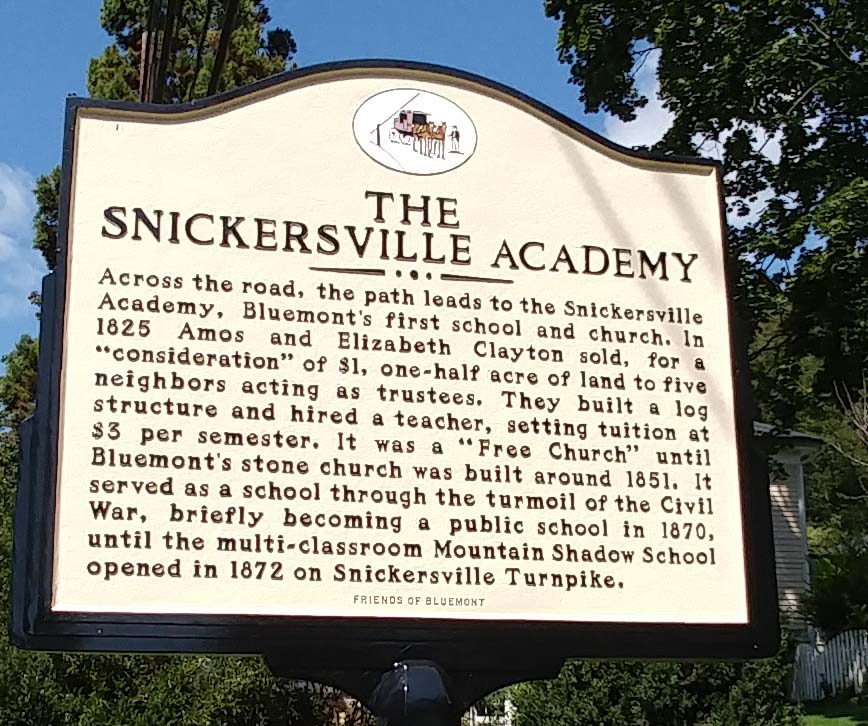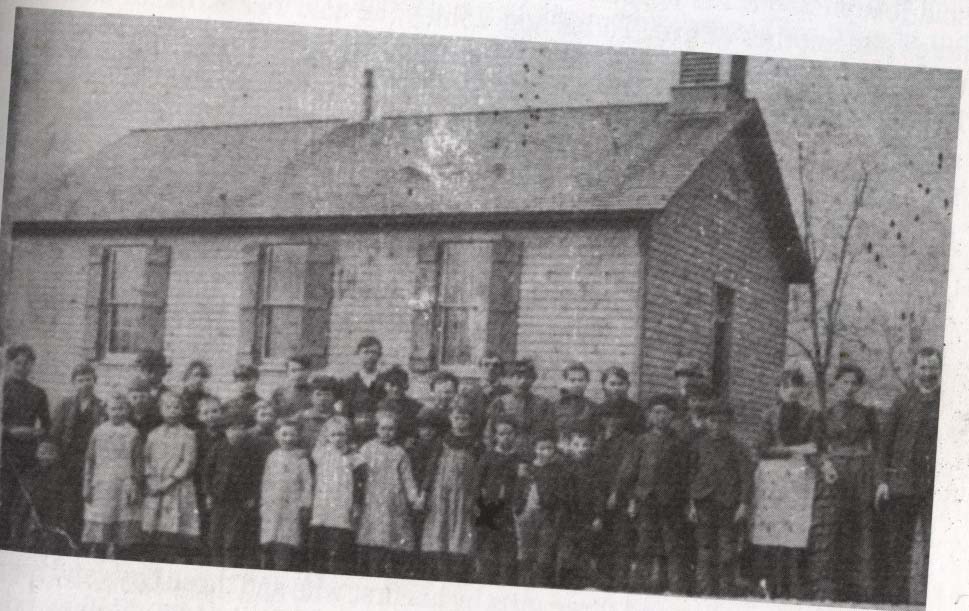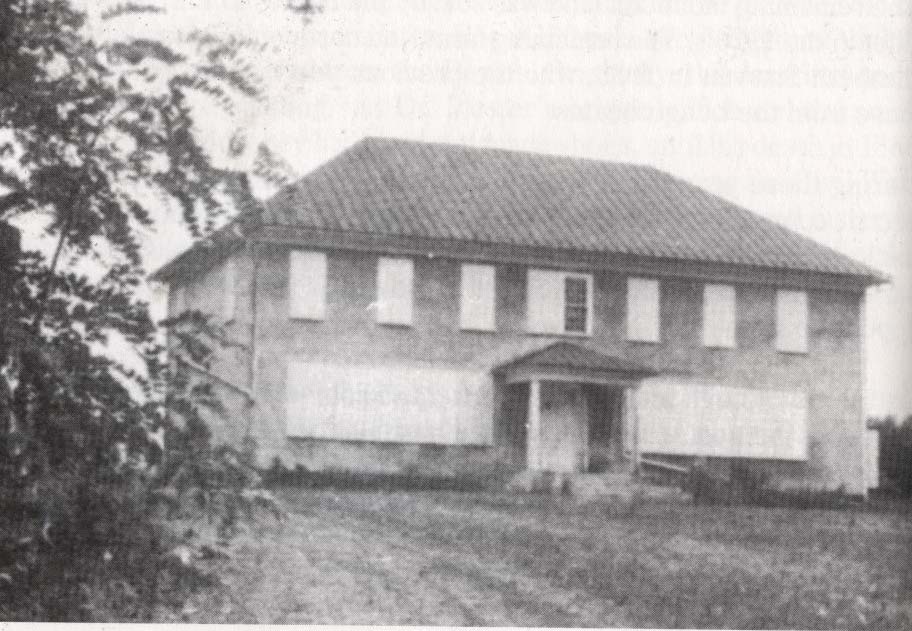Bluemont White Schools

Photo above taken in September, 2017 of restored Snickersville Academy in Bluemont. The school was created in 1825 and operated until 1870, to be replaced by the Mountain Shadow school on the turnpike in 1872.


Built around 1872, photo is from about 1887 of second Bluemont white school (Mountain Shadow School). The land was donated by Dr. George Emory Plaster. 33801 Snickersville Turnpike.

Third Bluemont School in 1940 (above). As constructed in 1922, this was a two story, detached, frame stucco building with metal roof, on stone foundation. The school house contained four classroom and an auditorium. It was lit by electricity and heated by a low pressure steam heating plant. It was also furnished with water and equipped with the usual plumbing fixtures necessary to the occupancy. The footprint was approximately 39.5′ x 80′ and in 1940 was considered to be in good condition. The insurance value that year was $13,000. The school continued service until 1962.

Undated photo of third school. Page 88 in Snickerville, the Biography of a Village. Now a community center.
Paper Term Reports are in Edwin Washington Archives. Bluemont White 1924/25 to 1962 in EWP: 6.3.2 Box 4.
Opening and Closing
Snickersville Academy in Bluemont was opened in 1825 on land donated by by Amos and Elizabeth Clayton; Amos was the son of the village’s founder, William Clayton.
Snickersville Academy operated until 1870, to be replaced by the Mountain Shadow school on the turnpike in 1872. After the property was donated to Friends of Bluemont by its last owners, the Hatchers, renovations began in 2011 and were completed in 2016.
Bluemont Elementary School was closed in 1963 and students hauled to Middleburg or Roundhill, as appropriate.
Transportation
Walking was a common method of school transportation even before the creation of Loudoun County Public Schools (LCPS). It’s believed that students who lived within 3 miles of a school could walk from their home to school. The figure at https://edwinwashingtonproject.org/s/ewp/item/35470 shows the location of the school with a circle representing the area from which students could have walked, back and forth from their home to the school. Travel by horse was also used and could have extended the travel distance.
Physical and Map Location
For whites, the schools were first the Snickersville Academy, a log cabin created in 1825 which has been restored. It is right by the town’s country store off a short trail. The second school was on land donated by Dr. George Plaster and stood on the property now across Snickersville Turnpike from the community center. The third school was on land donated by Dr. Rufus Humphrey in 1921. That structure is now the community center. The staff at the community center were very helpful to this project.
Petitions
History There were three schools for white children and one for Blacks in Bluemont during the segregated era. For an excellent history of the village, which is well worth a visit, due to its scenic qualities, we recommend from Snickersville to Bluemont by Jean Herron Smith, Evelyn Porterfield Johnson and Robert Hoffman, published by the Bluemont Citizens’ Association, 1970, with a second edition published in 2000 by Robert Hoffman.
Instructions